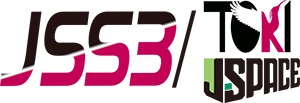Acoustic Liner Program for High-bypass-ratio Aircraft engines
JAXA Supercomputer System Annual Report February 2024-January 2025
Report Number: R24EDA101P00
Subject Category: Aeronautical Technology
- Responsible Representative: Tatsuya Ishii, Director of Aviation Environmental Sustainability Innovation Hub, Aviation Technology Directorate
- Contact Information: Shunji ENOMOTO(enomoto.shunji@jaxa.jp)
- Members: Hideaki Matsuura, Daisuke Sasaki, Junichi Oki, Shunji Enomoto
Abstract
Ultra high bypass ratio aviation jet engines have a smaller sound absorbing liner area than conventional engines. In this project, we will develop sound-absorbing device technology that provides high noise reduction performance even with a small-sized sound-absorbing liner.
Reference URL
N/A
Reasons and benefits of using JAXA Supercomputer System
To perform many LES calculations by changing the shape of the sound absorbing liner, the calculation performance and the storage capacity of JAXA supercomputer system were required.
Achievements of the Year
Acoustic liners contribute to the reduction of noise in jet engines, but they induce aerodynamic drag. The performance characteristics of acoustic liners vary depending on the shape of the orifices. In this study, we employ UPACS-LES with a compact scheme for analysis of three-dimensional turbulent flow in single acoustic liner model. Inflow Mach number is 0.3. Computations are conducted for two different orifice shapes: a Z-slit, a Round. Figure 1 and Figure 2 show that the flow goes into the orifices. From this, it can be observed that the round orifice has inflow and outflow at a constant frequency, but the z-slit orifice does not. Computational results indicate that the drag on the round orifice is higher compared to the z-slit orifice. To investigate the reasons, we calculate the inflow and outflow amounts into the interior of each orifice. We find the amplitude of the inflow and outflow is greater for the round orifice than for the z-slit orifice. Thus, we show the relationship between the inflow and outflow amounts into the orifice and the resulting drag.
Fig.1(video): Momentum in the y Direction (Round Orifice)
Fig.2(video): Momentum in the y Direction (Z-slit Orifice)
Publications
- Oral Presentations
H. Matsuura, D. Sasaki, S. Enomoto, and J. Oki, Estimate Drag of Acoustic Liners in Grazing Flow, 56th FDC/42nd ANSS, (2024-07-03). (In Japanese)
H. Matsuura, D. Sasaki, S. Enomoto, and J. Oki, Computational Estimation of Drag on an Acoustic Liner under Three-Dimensional Turbulent Flow, ICCFD12, (2024-07-14).
Usage of JSS
Computational Information
- Process Parallelization Methods: MPI
- Thread Parallelization Methods: OpenMP
- Number of Processes: 128 - 140
- Elapsed Time per Case: 120 Hour(s)
JSS3 Resources Used
Fraction of Usage in Total Resources*1(%): 0.29
Details
Please refer to System Configuration of JSS3 for the system configuration and major specifications of JSS3.
| System Name | CPU Resources Used(Core x Hours) | Fraction of Usage*2(%) |
|---|---|---|
| TOKI-SORA | 7100478.76 | 0.32 |
| TOKI-ST | 23653.40 | 0.02 |
| TOKI-GP | 0.00 | 0.00 |
| TOKI-XM | 166.02 | 0.08 |
| TOKI-LM | 855.40 | 0.06 |
| TOKI-TST | 0.00 | 0.00 |
| TOKI-TGP | 0.00 | 0.00 |
| TOKI-TLM | 0.00 | 0.00 |
| File System Name | Storage Assigned(GiB) | Fraction of Usage*2(%) |
|---|---|---|
| /home | 741.43 | 0.50 |
| /data and /data2 | 153897.14 | 0.74 |
| /ssd | 33588.57 | 1.80 |
| Archiver Name | Storage Used(TiB) | Fraction of Usage*2(%) |
|---|---|---|
| J-SPACE | 19.70 | 0.06 |
*1: Fraction of Usage in Total Resources: Weighted average of three resource types (Computing, File System, and Archiver).
*2: Fraction of Usage:Percentage of usage relative to each resource used in one year.
ISV Software Licenses Used
| ISV Software Licenses Used(Hours) | Fraction of Usage*2(%) | |
|---|---|---|
| ISV Software Licenses(Total) | 271.95 | 0.19 |
*2: Fraction of Usage:Percentage of usage relative to each resource used in one year.
JAXA Supercomputer System Annual Report February 2024-January 2025


